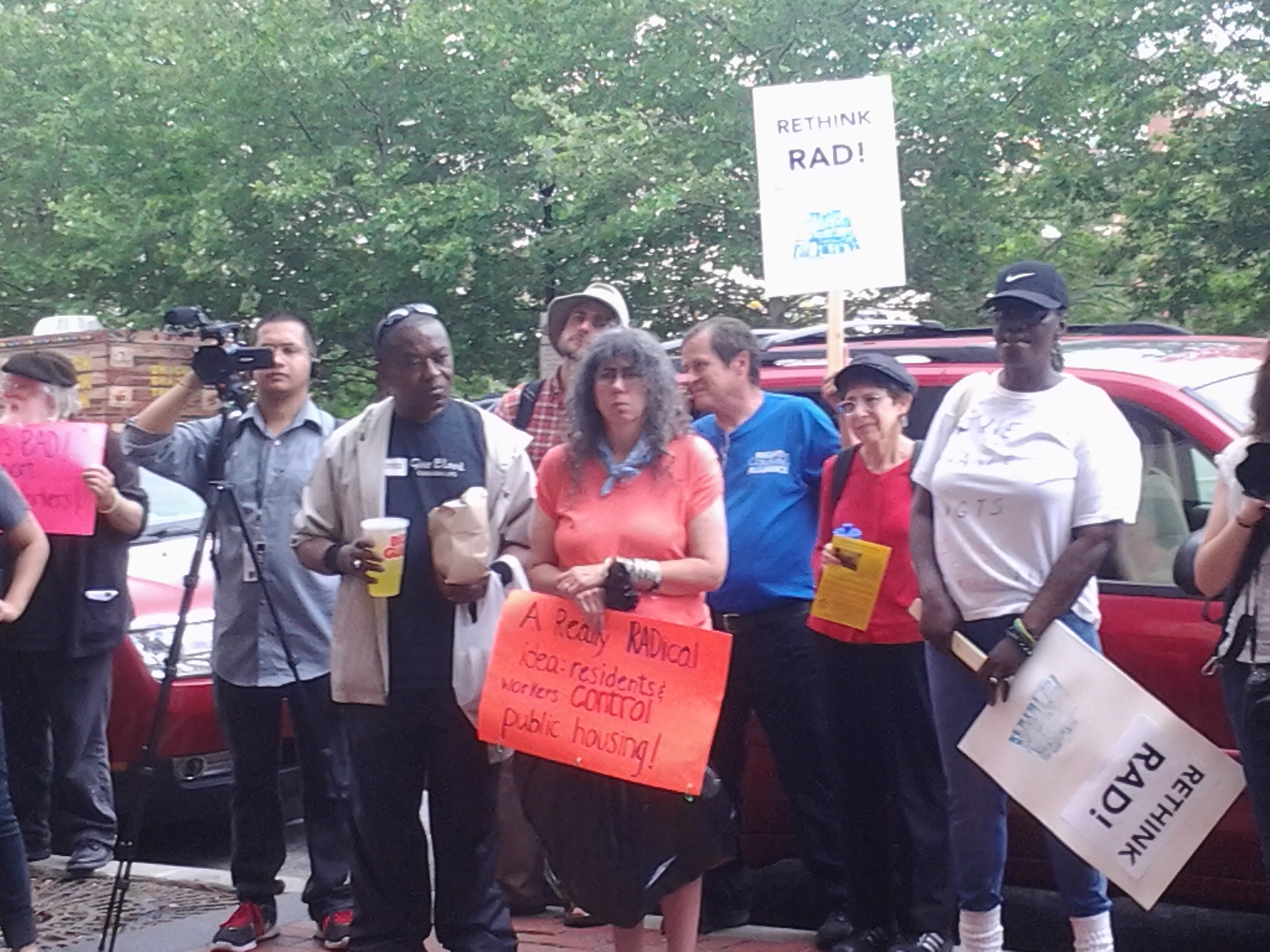Baltimore residents protest rental assistance program
Members of the Right To Housing Alliance (RTHA), public housing residents, displaced workers, activists and concerned citizens protested Wednesday in front of the Baltimore Housing Authority.
 They protested Baltimore’s joining the RAD program. RAD stands for Rental Assistance Demonstration. It’s a federal program piloted in Baltimore. The program operates by converting public housing subsidies into Section 8 subsidies that are attached to developments.
They protested Baltimore’s joining the RAD program. RAD stands for Rental Assistance Demonstration. It’s a federal program piloted in Baltimore. The program operates by converting public housing subsidies into Section 8 subsidies that are attached to developments.
RAD consists of two components that allow financing tools to be applied to at-risk public and assisted housing and has two components, according to the U.S. Housing and Urban Development. The components allow:
- Public Housing and Moderate Rehabilitation (Mod Rehab) properties to convert, under a competition limited to 60,000 units, to long-term Section 8 rental assistance contracts
- Rent Supplement (Rent Supp), Rental Assistance Payment (RAP), and Mod Rehab properties to convert tenant-based vouchers issued upon contract expiration or termination to project-based assistance.
“RAD is a central part of the Department’s rental housing preservation strategy, which works to preserve the nation’s stock of deeply affordable rental housing, promote efficiency within and among HUD programs, and build strong, stable communities,” accourding to HUD.
However some residents claim RAD and the privatization of public housing will create more homelessness. Members of the local union, AFSCME Local 647 also joined the picket line fighting for jobs. At least 200 people who work at the Housing Authority may lose their jobs under RAD.
Mary and Tim, were among 60 protesters. They took the bus downtown in their wheelchairs because of the importance of this to them.
 Long-time warrior for affordable housing, Jeff Singer joined in with his own handmade sign which read “RAD is BAD. Support Union Workers.”
Long-time warrior for affordable housing, Jeff Singer joined in with his own handmade sign which read “RAD is BAD. Support Union Workers.”
The goal of the demonstration was to counter the Housing Authority’s statement, “That residents support implementation of RAD and have had meaningful participation in the process.” according to Jessica Lewis with RTHA. Lewis stated the next steps are to inform the public that this is happening and keep pressure on the Housing Authority to “Rethink RAD.”
Calls were placed to the Housing Authority’s office and the mayor’s office for their comments on the RAD program. The mayor’s office has yet to respond.
Cheron Porter, media relations for the Baltimore Housing Authority responded to a series of questions.
How did Baltimore end up in the RAD program?
We applied and were accepted.
What are the benefits of the RAD program?
Bringing buildings up to date. Housing didn’t have the funding to do this. Many senior buildings have elevators that don’t work properly. The money from RAD can help us fix this. It will also ensure that BROWN OUT conditions where no air conditioning is on will not happen.
Is there any truth that RAD will make residents of the buildings in the Program homeless?
The residents will be able to stay in their building and their rent will be the same. They may experience the inconvenience of having to move to another unit during repairs and renovations.
What about job losses under RAD?
The developers are interested in hiring the existing maintenance and staff of the buildings. We are working with AFSCME locals 647, 2969 and 4007.
;

Bonnie Lane is an avid activist and advocate here in Baltimore. She is very vocal about social injustices. Fighting against injustice isn’t just a slogan to her but a way of life. Lane is a soldier in the struggles for social justice, real change and human rights. Having been homeless is what inspired her to become an advocate/activist. A passion for writing consumed her at an early age.


The government has neglected to fund maintenance of public housing for generations. I understand why the residents are angry and why the laid off employees are angry, but the government is clearly never going to actually maintain its buildings. It has not done so in over 60 years and it will not start any time soon. The options are either tearing them down or using RAD to bring in private funding. I would not be surprised if public housing goes extinct and RAD becomes mandatory.